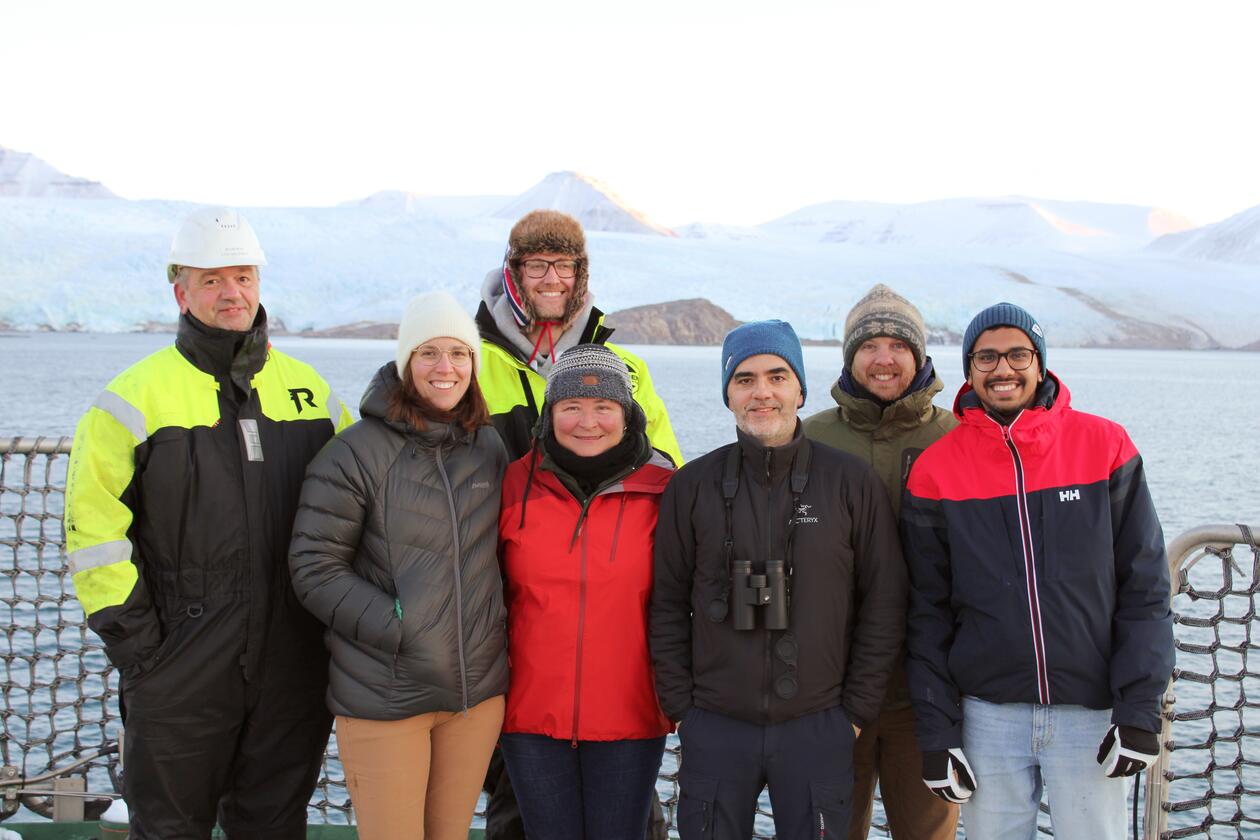A Moonshot in the Freezing Arctic Depths
An interdisciplinary team from the University of Bergen, has taken a major step forward in deep sea exploration and sampling of Earth’s last truly remote and inaccessible seafloor environment – the extreme depths of the ice-covered Arctic Ocean.

Main content
The HACON 2021 expedition, led by CAGE (UiT) and NIVA, brought together a diverse multi-national team of scientists aboard the Norwegian icebreaker Kronprins Haakon. In October 2021, the University of Bergen (UiB) team, working with this interdisciplinary effort, successfully explored and sampled - for the first time in history - unique seafloor hydrothermal vents 4 km deep at the ‘Aurora’ submarine volcano, using the new, aptly named REV Ocean submersible ROV Aurora.
Located on the virtually unexplored Gakkel mid-ocean ridge, the Aurora site lies beneath thick permanent Arctic sea-ice. Aurora was the first “black smoker” hot spring system discovered on this ridge.
The HACON 2021 expedition is the first time such a unique volcanic environment has been successfully explored and sampled in detail beneath permanent polar sea ice. The site was first detected 20 years ago and remained unexplored until 2014 and 2019 expeditions revisited and confirmed its location with towed camera images. However, these expeditions were unable to directly sample the site due to the technical challenges of working in thick, drifting ice conditions.
This time, building on the previous imaging of Aurora, and lessons learned during the 2019 HACON expedition aboard Kronprins Haakon, this tremendously successful sampling campaign in such a challenging ice-covered deep-sea setting heralds a new era of collaborative Arctic seafloor exploration and in-depth investigation.

The Norwegian icebreaker Kronprins Haakon made exploring beneath the ice possible.
According to the UiB team, consisting of scientists, Ph.D. students and ROV engineers from the University of Bergen Department of Biological Sciences and Department of Earth Science, access to these unique samples will allow us to provide critical baseline information on this pristine unexplored deep-sea ecosystem. This research is crucial prior to the anticipated onset of commercial activities in the Arctic as a consequence of retreating ice cover.
Specifically, the expedition aims to address whether or not the fauna at Aurora evolved in isolation in the Arctic Ocean, or if it is connected to life in other ocean basins. Furthermore, demonstrating the ability to obtain such rare hydrothermal vent samples from beneath a deep, ice-covered ocean is a compelling technological leap toward future exploration of ice-covered ocean worlds elsewhere in the Solar System, such as those known to exist on the moons Enceladus and Europa. The Aurora samples may not only provide insights into how early life formed on Earth, but also inspire the search for extra-terrestrial life around seafloor hydrothermal vents in our solar system.
Funded by the Norwegian Research Council’s HACON project, the UiB team (Ida Helene Steen, Pedro Ribeiro, Eoghan Reeves, Stig Vågenes, Samuel Pereira, Emily Denny, together with John Jamieson of Memorial University of Newfoundland, Canada) will analyse the numerous collected samples of high-temperature fluids, chimney structures, sediments, and fauna for geochemical, microbiological and ecological studies, allowing us to explore and describe this previously hidden site in unprecedented detail.
The UiB team plans to investigate the unique geochemistry, microbiology and faunal diversity and connectivity of the system upon returning to Bergen, in collaboration with multinational HACON project partners from the University of Tromsø, Norwegian Institute for Water Research, Institute of Marine Research, REV Ocean, Memorial University of Newfoundland, University of Aveiro, Woods Hole Oceanographic Institution, NASA-Jet Propulsion Laboratory and Alfred Wegener Institute.
